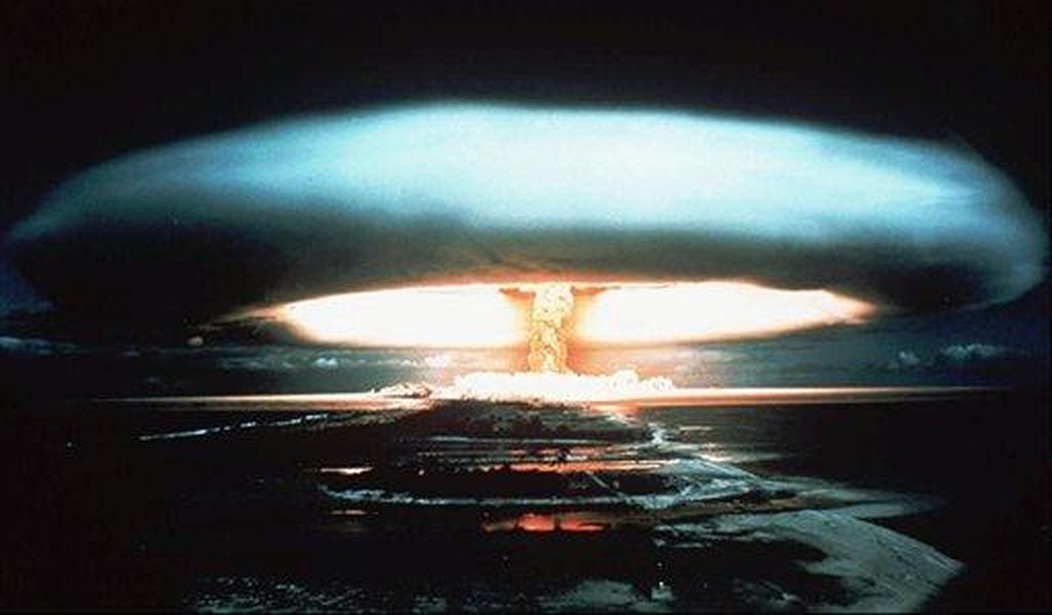The White House has been discussing the possible resumption of testing nuclear devices as a means to pressure Russia and China to come to the bargaining table.
Nuclear testing was completely banned in 1991 when George H. W. Bush signed the START treaty. Resuming tests now would send a clear message that the U.S. wants another arms control treaty, this time involving China. China has rebuffed the suggestion, saying its nuclear arsenal is tiny compared to those of Russia and America. But the Chinese military is building missiles as fast as it can, and putting the brakes on China’s efforts makes sense.
The White House meeting discussing the testing option was a “deputies level” meeting, meaning it didn’t involve any cabinet secretaries or the president.
The discussion was first reported on Friday night by the Washington Post, which cited a senior administration official as saying that a demonstration to Moscow and Beijing that the United States could carry out a “rapid test” could be a useful bargaining counter in the achieving the administration’s priority on arms control – a trilateral deal with Russia and China.
The report also quoted a senior administration official as saying the proposal was “very much an ongoing conversation”.
Why test something we know already works? Nuclear weapons are in constant need of being upgraded given the deterioration of the uranium core. Also, there’s only so much a computer simulation can show you about how a new warhead design will perform.
You can bet the Russians want answers to those questions as well.
The last major arms control treaty left standing is the 2010 New Start agreement, limiting US and Russian deployed strategic warheads. It is due to expire in February next year but the Trump administration has said it does not want to extend it without bringing China into arms control negotiations. Beijing has refused, on the grounds that its stockpile is tiny compared with the US and Russian arsenals (estimated at just over a twentieth of the size).
The apparent motive behind the proposal to resume US testing was somehow to add pressure on China.
China fears Russia, with whom it shares a long, contested border (unlike the U.S.). U.S. testing might encourage Russia to start testing. China’s fear of this new Russian nuclear testing would certainly give Beijing some incentive to join the talks.
Experts and professionals dismiss the idea of resuming testing as risky.
“They discussed underground testing in the context of trying to bring China to the table for the trilateral agreement,” a former official said. “Among the professionals in the administration, the idea was dismissed as unworkable and dumb. The NNSA [National Nuclear Security Administration] is definitely not on board. And it seemed like that state [department] wasn’t on board either.”
But is it really necessary to test?
The NNSA, an agency of the energy department, has the job of maintaining the readiness of the US nuclear arsenal, and has developed computer diagnostic tools to check the state of the warheads, drawing on data from the 1,054 tests the US carried out between 1945 and 1992.
“By and large, the scientists and engineers and the nuclear weapons enterprise have been very satisfied with that approach,” said Frank Klotz, who served as NNSA administrator in the Obama administration and the first year of the Trump administration.
No doubt they’ve been “satisfied” with computer models but why doesn’t someone ask them if they would prefer the real thing?
Whether or not to resume nuclear testing is a political decision. Trump must weigh what his experts are saying against his instincts about China and Russia.
There’s no telling how that decision will turn out.










Join the conversation as a VIP Member